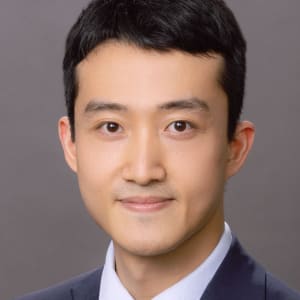
Zhi Ren
 Zhi Ren |
Zhi Ren1, Aurea Simon-Soro1, Pedro J. Cabello-Yeves2, Scott G. Daniel3, Kyle Bittinger3, Inmaculada Tomas4, Alex Mira2, Hyun (Michel) Koo1
1Biofilm Research Laboratories, Department of Orthodontics, Divisions of Community Oral Health & Pediatric Dentistry ; 2Center for Advanced Research in Public Health, FISABIO Foundation; 3Division of Gastroenterology, Hepatology, and Nutrition, Children's Hospital of Philadelphia; 4Department of Surgery and Medical-Surgical Specialties, School of Medicine and Dentistry, Universidade de Santiago de Compostela
Introduction
Current paradigm for oral biofilm formation has been established as a sequential succession process. Specific free-living microbes adhere to the tooth surface as pioneer species (early colonizers) allowing subsequent attachment of late colonizers. However, microorganisms are often found forming multicellular assemblages in saliva while their role in biofilm formation remains unknown. Here, we conduct a comprehensive analysis of the aggregated microbial assemblages in saliva and investigate their spatiotemporal attachment and biofilm development on tooth-mimetic surfaces.
Methods
We characterized the spatial structure and microbial diversity of the native-state salivary community in saliva collected from human subjects (IRB #818549) across different time points using multiscale imaging, cell sorting and metagenomic sequencing. The growth dynamics of surface-attached saliva-derived microbes was investigated using a super-resolution confocal live imaging system coupled with flow-cell microfluidics and computational analyses.
Results
We find a diverse mixture of naturally-occurring microbial assemblages with various sizes, structures, and compositions in saliva in addition to single cells (97% of salivary microbes in aggregated form). Taxonomy analyses of the aggregated microbes reveal a mixture of Streptococcus, Haemophilus, Veillonella, Prevotella, Porphyromonas, and Fusobacterium, among many others, indicating a highly complex salivary community. Notably, bacteria traditionally considered as early and late colonizers are found together within mixed-species assemblages in saliva, in the initial surface-colonizing community, and in the early-formed human plaque samples, indicating that they bind concomitantly to the surface as a colonizing unit. When individually tracked during colonization and biofilm initiation, assemblages rapidly proliferate and expand tri-dimensionally modulating population growth, spatial organization, and community scaffolding. In contrast, most single cells remain static or are incorporated by actively growing assemblages.
Conclusion
We propose an alternative oral biofilm development process whereby pre-formed microbial assemblages containing different species collectively adhere to the tooth surface as ‘buds of growth’, governing biofilm development without specific taxonomic order or cell-by-cell succession.